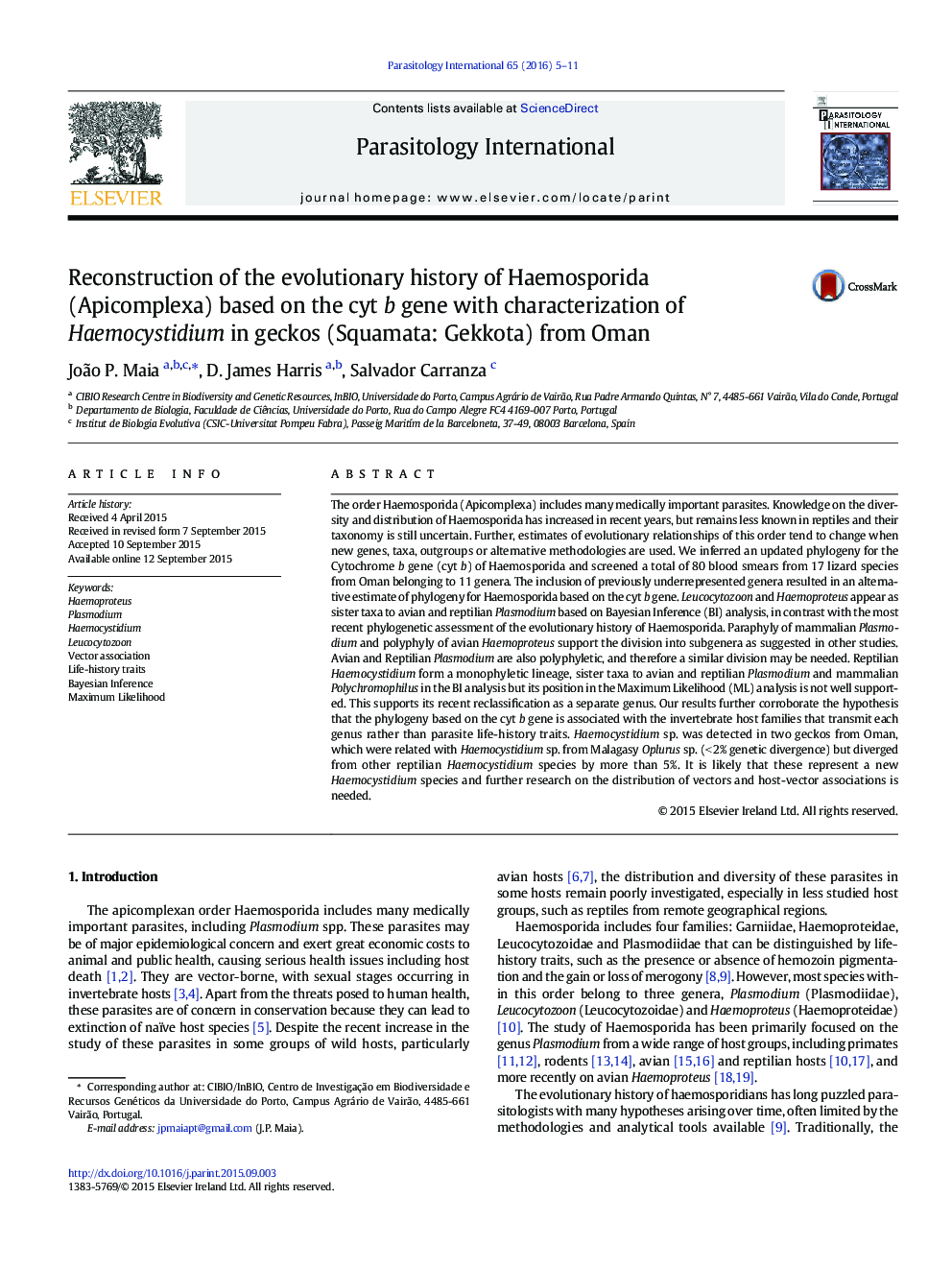| کد مقاله | کد نشریه | سال انتشار | مقاله انگلیسی | نسخه تمام متن |
|---|---|---|---|---|
| 3417719 | 1225463 | 2016 | 7 صفحه PDF | دانلود رایگان |

• Updated cyt b phylogeny of Haemosporida provides an alternative estimate of relationships.
• Leucocytozoon and Haemoproteus are sister taxa to bird and reptilian Plasmodium.
• Avian and Reptilian Plasmodium are polyphyletic and a taxonomic revision is needed.
• Possible new Haemocystidium species detected in geckos from Oman
The order Haemosporida (Apicomplexa) includes many medically important parasites. Knowledge on the diversity and distribution of Haemosporida has increased in recent years, but remains less known in reptiles and their taxonomy is still uncertain. Further, estimates of evolutionary relationships of this order tend to change when new genes, taxa, outgroups or alternative methodologies are used. We inferred an updated phylogeny for the Cytochrome b gene (cyt b) of Haemosporida and screened a total of 80 blood smears from 17 lizard species from Oman belonging to 11 genera. The inclusion of previously underrepresented genera resulted in an alternative estimate of phylogeny for Haemosporida based on the cyt b gene. Leucocytozoon and Haemoproteus appear as sister taxa to avian and reptilian Plasmodium based on Bayesian Inference (BI) analysis, in contrast with the most recent phylogenetic assessment of the evolutionary history of Haemosporida. Paraphyly of mammalian Plasmodium and polyphyly of avian Haemoproteus support the division into subgenera as suggested in other studies. Avian and Reptilian Plasmodium are also polyphyletic, and therefore a similar division may be needed. Reptilian Haemocystidium form a monophyletic lineage, sister taxa to avian and reptilian Plasmodium and mammalian Polychromophilus in the BI analysis but its position in the Maximum Likelihood (ML) analysis is not well supported. This supports its recent reclassification as a separate genus. Our results further corroborate the hypothesis that the phylogeny based on the cyt b gene is associated with the invertebrate host families that transmit each genus rather than parasite life-history traits. Haemocystidium sp. was detected in two geckos from Oman, which were related with Haemocystidium sp. from Malagasy Oplurus sp. (< 2% genetic divergence) but diverged from other reptilian Haemocystidium species by more than 5%. It is likely that these represent a new Haemocystidium species and further research on the distribution of vectors and host-vector associations is needed.
Figure optionsDownload as PowerPoint slide
Journal: Parasitology International - Volume 65, Issue 1, February 2016, Pages 5–11